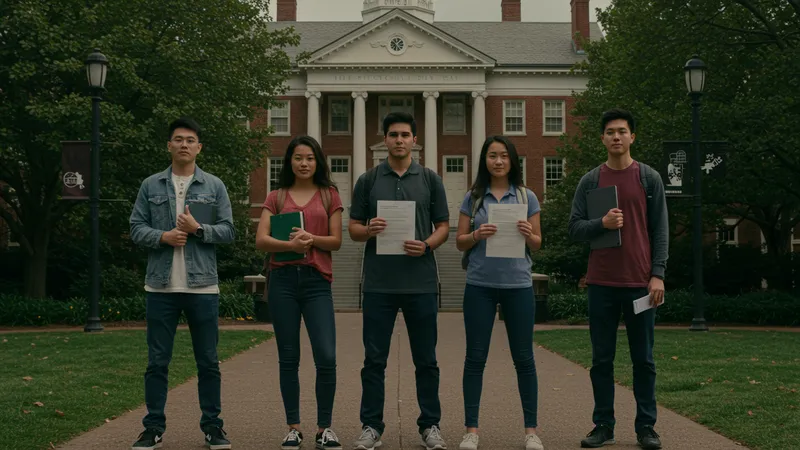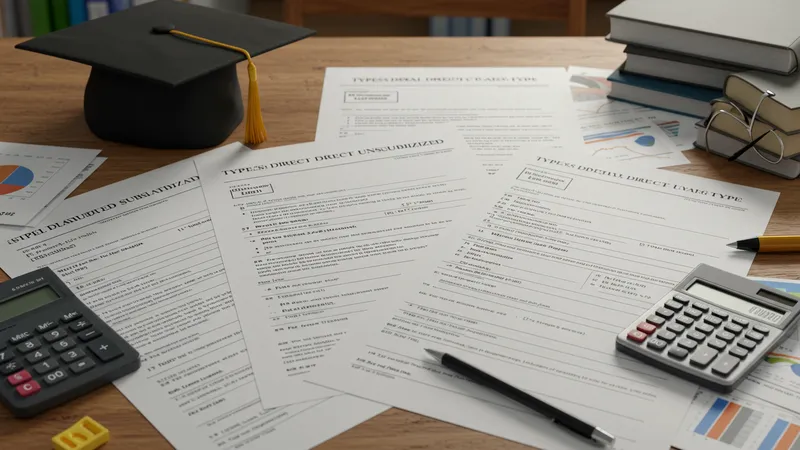

Financing a college education in the United States often requires more resources than most families can immediately access. For many, student loans present a critical bridge, transforming the pursuit of a degree from a distant aspiration into a tangible goal. While scholarships and grants provide some students with funds that don’t need repayment, the majority must rely on borrowed financial support to cover rising tuition, fees, living expenses, and books. Student loans are structured to help learners invest in their future, with manageable repayments and varied interest rates designed to accommodate different needs.
In the American education system, the concept of student loans plays a pivotal role not only in promoting access to higher learning but also in enabling diverse populations to attend colleges and universities. Without these financing mechanisms, countless students wouldn’t have the means to pursue advanced degrees or specialized training programs. By offering deferred repayment and competitive rates, these loans strive to balance immediate educational needs against long-term financial planning.

Federal student loans are considered the foundation of educational financing in the United States. Subsidized and unsubsidized options through the Department of Education offer lower, regulated interest rates and repayment protections not always available with private lenders. For undergraduate and graduate students, these loans often serve as the first source of borrowed funds, sometimes supplemented with state or institutional support.
Private student loans, such as those from Sallie Mae, Discover, and Citizens, play an important role for students who have reached their federal borrowing limits or who require additional funds for tuition or living expenses. These loans typically depend on the borrower’s credit history, and interest rates vary more widely than with federal options. However, many private lenders offer flexible repayment plans and features designed for student needs.
PLUS Loans stand out because they allow parents of undergraduates, as well as graduate students themselves, to borrow at higher amounts and with a more streamlined application process. The higher interest rates associated with PLUS loans reflect the increased borrowing power, making them a strategic choice for families determined to fill the entire cost gap for education.
Online lenders such as SoFi and Ascent are popular among today’s students for their fast application processes and fit for independent or nontraditional learners. These options often appeal to creditworthy borrowers or those with a cosigner, and some lenders provide unique benefits like deferred payments or interest rate discounts for autopay enrollment.
Understanding the nuances of each lending option is crucial for prospective borrowers. Not only do interest rates and fees directly impact the long-term cost of a degree, but the repayment terms, loan forgiveness policies, and borrower protections can dramatically alter the financial trajectory of a graduate. The deeper details reveal even more valuable insights ahead as we examine each facet of educational borrowing in the United States.
Each student loan product available in the United States is designed with particular features tailored to academic level, borrower background, and financial circumstances. Federal Direct Subsidized Loans, for example, are reserved for undergraduates demonstrating financial need. The U.S. government covers the interest during school and select periods, creating a manageable debt load for students just entering higher education. In contrast, Federal Direct Unsubsidized Loans are accessible to a wider range of students, regardless of need, but interest accumulates as soon as the funds are disbursed.

Private loans, such as those offered by Sallie Mae, Discover, and Ascent, can supplement federal aid. These loans frequently require credit checks and, in many cases, a co-signer. Their underwriting criteria often reflect market conditions, meaning interest rates can fluctuate significantly, especially for variable-rate loans. Some lenders incorporate benefits like cosigner release, autopay discounts, or graduation rewards to attract borrowers.
Navigating the landscape of student loans involves deeper decisions about repayment options. Federal loans come with standardized repayment schedules, income-driven plans, and eligibility for federal forgiveness, which can offer peace of mind to borrowers uncertain about their post-graduation income. In contrast, most private lenders provide less flexibility, but recent years have brought innovations like interest rate matching and career support programs.
Understanding the origination fees, disbursement timelines, and borrower protections is key to making informed choices. For instance, federal loans cap origination fees and post all rates publicly each year, allowing for clear cost comparisons. Private lenders often market themselves with transparent, no-fee structures but may offset this with higher variable interest rates or more stringent credit requirements. These factors can make a crucial difference in the total cost and manageability of post-graduation debt, influencing the academic and financial future of millions of American students.
Borrowing for education in the United States isn’t just about accessing funds; it’s also about taking advantage of benefits and devising a personalized repayment strategy. Federal student loans stand out for their flexible income-driven repayment plans. These plans adjust monthly payments based on the borrower’s earnings and can extend the repayment term up to 25 years, offering significant relief to those transitioning into workforce roles that may not immediately yield high salaries.

Public Service Loan Forgiveness (PSLF) is a notable advantage for federal loan borrowers who pursue careers in government or nonprofit sectors. By making 120 qualifying monthly payments under an income-driven plan while working full-time for an eligible employer, borrowers can have their remaining loan balance forgiven. This creates a compelling incentive for service-oriented professionals, helping to direct talent into critical public roles.
Private loan repayment options vary widely. Lenders such as SoFi and Ascent offer choices like interest-only payments during school, fixed or variable repayment after graduation, and sometimes even temporary deferment if a borrower returns to school. Although these options can provide flexibility, the protection and breadth of offerings typically do not match those associated with federal loans.
Repayment strategy can make the difference between financial strain and long-term success. Borrowers with multiple loans often consolidate federal loans for simplicity, while private refinancing can reduce interest rates for those with strong credit. Balancing federal protections with the incentives from private lenders requires thoughtful planning—especially for students aiming to optimize their educational investment without being overwhelmed by future obligations.
The true cost of borrowing for education in the United States depends on far more than the headline interest rate. For federal loans, interest rates are set annually and differ based on academic level and loan type, while the origination fee is deducted from the disbursed amount. For example, undergraduates saw a subsidized loan interest rate of 5.50% in 2024–2025, while PLUS loans for parents and graduate students came with an 8.05% rate. Origination fees, though seemingly minor, can amount to hundreds of dollars on larger loans and increase the effective borrowing cost.

Private loan rates depend on market factors and individual credit profiles. Some private lenders offer enticingly low variable rates to highly qualified applicants, but these rates can change with economic conditions. Fixed rates provide predictability but are often higher on average. No-fee promises from lenders like SoFi appeal to cost-conscious students, but the real expense is revealed over the life of the loan, especially for those who defer payments while in school.
Compound interest—the accrual of interest on interest—can substantially increase the overall repayment amount, particularly for unsubsidized federal or private loans. Students who delay payments until after graduation could face higher balances due to accumulated interest during school. For this reason, even small payments during enrollment can make a significant difference in long-term financial outcomes.
Comparing expected salaries in chosen fields to projected monthly loan payments is an essential part of determining the sustainability of borrowing. Free online tools provided by the U.S. Department of Education help students estimate repayment schedules, total interest paid, and eligibility for income-driven plans, supporting informed decisions that align educational aspirations with future financial capabilities.
The long-term impact of student loan borrowing in the United States shapes both individual lives and the broader economy. Student debt can affect decisions to purchase homes, start businesses, or pursue graduate education. Those who successfully manage repayments often cite careful budgeting and strategy, along with the support provided by transparent lender communication and tailored federal programs.

Future trends in student loan financing reflect evolving priorities. Policymakers increasingly debate interest rate structures, forgiveness policies, and expanded access to income-driven repayment. Some lenders have adopted advancements such as digital origination, customized support, and streamlined application experiences to attract new generations of students. These innovations aim to simplify the process while offering new forms of borrower support.
Despite advancements, challenges remain. Rising tuition and living costs continue to increase borrowing needs, and reports indicate that many U.S. households carry student debt well into middle age. Initiatives that combine financial education, clear repayment options, and responsible borrowing limits are critical for supporting students without jeopardizing future economic stability.
As students and families navigate the changing landscape, one constant endures: thoughtful research and planning remain the most effective ways to leverage student loans for educational advancement. By matching the right loan products with realistic post-graduation goals, borrowers can create a foundation for a brighter, more secure financial future—making educational attainment truly within reach for motivated Americans.